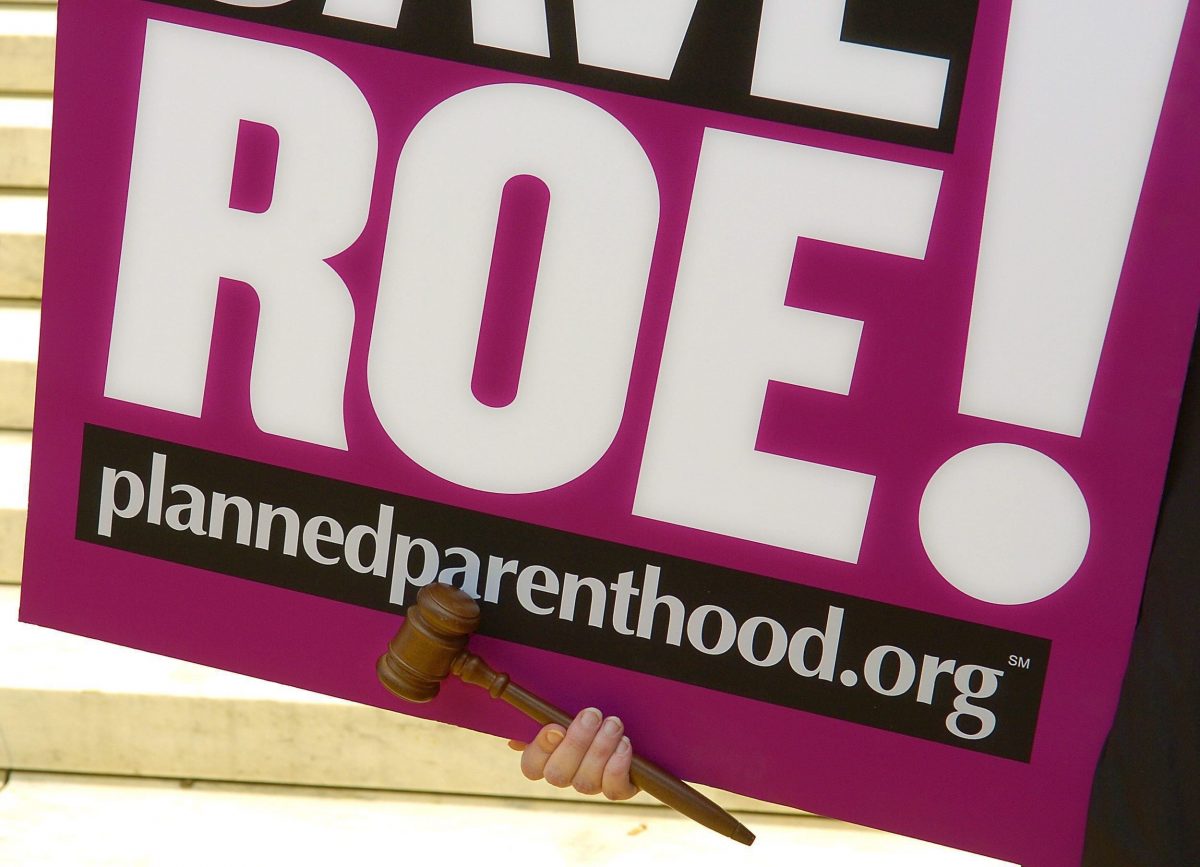What was it like in the U.S. before abortion was legal? A doctor recalls botched, amateur procedures and fears health risks if abortion is re-criminalized.

A demonstrator favoring abortion rights holds a “Save Roe” sign, 1 July 2005, Washington, DC (EPA/Mike Theiler)
A woman’s “right to choose” whether to carry a pregnancy to term has long been a contentious issue in the United States, even though the Supreme Court legalized abortion in its 1973 Roe v. Wade decision.
The landmark ruling put the United States among the 30% of countries worldwide that permit abortion on the basis of the mother’s request, according to a United Nations report on world abortion policies.
Recently, the long-smoldering U.S. battle over abortion rights has escalated to levels not seen since Roe was decided. A number of states with legislatures controlled by the conservative Republican Party have passed laws curbing or curtailing access to abortion — even in cases of rape or incest.
By the end of May, more than 350 bills that would restrict abortion had been proposed in state legislatures this year, according to the Guttmacher Institute, a reproductive rights research group.
In May, Alabama lawmakers voted to ban abortions in nearly all cases. Georgia, Kentucky, Louisiana, Missouri, Mississippi and Ohio have approved “heartbeat bills” that effectively prohibit abortions after six to eight weeks of pregnancy, when doctors can usually start detecting a fetal heartbeat. Many women do not know they are pregnant at that point.
These state laws, if challenged, could come before the U.S. Supreme Court’s nine justices. Defenders of the right to abortion fear that the Court, which has become more conservative since Republican President Donald Trump appointed justices Neil Gorsuch and Brett Kavanaugh, could overturn or chip away at the 1973 ruling.
Glenn Herman is an obstetrician/gynecologist (OB-GYN) who started practicing medicine before Roe became law. He later went on to sub-specialize in maternal and fetal medicine and has treated patients in Pennsylvania, New Jersey, Kentucky and Texas.
The recollections of specialists like Herman offer a view of life before Roe and a preview of what it could mean for women if the decision were overturned.
U.S. medical practice before Roe
Dr. Herman’s pre-Roe experiences with abortion came not long after he graduated from New York Medical College in 1971. He moved to Philadelphia in 1972 for a three-year OB/GYN residency at Temple University. Learning the basics of his profession kept him “busy as never before, but one aspect of gynecology was always there,” he said.
“About three times a day, no matter what else I was doing, I would be called to the emergency room to take care of a miscarriage, or in medical terms, a ‘spontaneous incomplete abortion.’ I typically found a young woman bleeding heavily, in significant pain and looking quite scared,” he said.
“We controlled the pain, bleeding and infection risk by doing a D&C [dilation & curettage]. Taking care of these women was an important medical activity, but it happened randomly over the course of a day. The issue was always there. It eventually became just a bit old, but it was always a part of the job.”
About once a month, Herman said he encountered a “septic abortion” — a potentially lethal infection in the uterus of a pregnant woman that he said was almost always the result of an illegal attempt at an abortion.
“These patients were filled up with antibiotics immediately, then taken to the operating room for a D&C. The infection made it very easy to tear a hole in the uterus. Days in the hospital were required for further administration of IV [intravenous] antibiotics. Some of these patients did die of infection and hemorrhage,” he said.
U.S. medical practice after Roe
In 1973, Roe became law, legalizing abortion nationwide. “The dramatic decrease in septic abortions was obvious as soon as the law changed,” Herman said.
He discovered fellow residents had also noticed a steep drop in spontaneous incomplete abortions — from about three patients a day to about two a week for every resident.
Hot-button abortion topics
By Susan Ruel
Abortions in high-risk pregnancies, late-term abortions, births of newborns with fatal abnormalities — Dr. Glenn Herman weighed in on key issues that frequently come up in abortion debates. (more)
“I realized that about 75 percent of our `spontaneous incomplete abortions’ had been far from `spontaneous,’” Herman said.
Talking to patients, he learned more about how illegal abortions were being performed in the community. A medically untrained person was “putting knitting needles through the cervix to rupture the fetal membrane.” They then told the women to go to the hospital when cramping and bleeding started.
He realized that the number of instrumented cases was beyond anything they had imagined: More than 70 times a month, residents had been “completing abortions done by untrained but experienced abortionists.”
Herman noted that the amateurs were “pretty good at it” because only about one patient a month turned septic. Of those, roughly one patient died each year.
“We never knew the extent of the problem until the problem went away,” he said.
If Roe were overturned
Herman said that for economically disadvantaged women, outlawing abortion would mean that “knitting needles would reappear, and we would go back to what we saw before Roe.”
Nowadays, since many more physicians have been trained to do abortions, wealthier patients could find ways to get “expensive, surreptitious” illegal abortions, he said. Or wealthier women could afford to travel to countries where abortion remained legal.
“Of course, some women would not seek out these procedures, and some unwanted pregnancies would now be carried to term,” he said.
Abortion as U.S. political football
Herman, still licensed to practice as an OB-GYN, said Roe “provided a solution to women who have an unwanted pregnancy.” They ranged from “mothers who couldn’t afford or care for another child to naive teenagers who couldn’t even imagine being pregnant,” he said. A major factor in unwanted pregnancies is contraceptive failure, he added.
After the Roe ruling, chronically ill patients were no longer forced to accept the risk of pregnancy. “Down Syndrome could now be approached, and fetal birth defects could be evaluated in terms of all available therapies,” Herman said. “Family or personal histories suggesting the risk of genetic disease were no longer a bar to pregnancy.”
Herman opposes women losing their legal right to abortion but recognizes the issue has become deeply political.
When abortion was legalized in 1973, “at first it did not cause a whole lot of debate,” he said. “When it came to be a very effective political ‘wedge issue,’ the uproar began.”
THREE QUESTIONS TO CONSIDER:
- What was Roe v. Wade?
- Why does Dr. Herman oppose the overturning of Roe v. Wade?
- Do you believe there should be limits on a woman’s right to abortion?
 Susan Ruel worked on the international desks of the Associated Press and United Press International and reported for UPI from Shanghai, San Francisco and Washington. Her novel about foreigners in China, The Shanghai Friendship Store, is being published serially by Vision Times, a global, multilingual Chinese news website. A former journalism professor with a PhD, she co-authored two French books on U.S. media history. Since 2005, she has been writing and editing for healthcare non-profits in New York.
Susan Ruel worked on the international desks of the Associated Press and United Press International and reported for UPI from Shanghai, San Francisco and Washington. Her novel about foreigners in China, The Shanghai Friendship Store, is being published serially by Vision Times, a global, multilingual Chinese news website. A former journalism professor with a PhD, she co-authored two French books on U.S. media history. Since 2005, she has been writing and editing for healthcare non-profits in New York.
